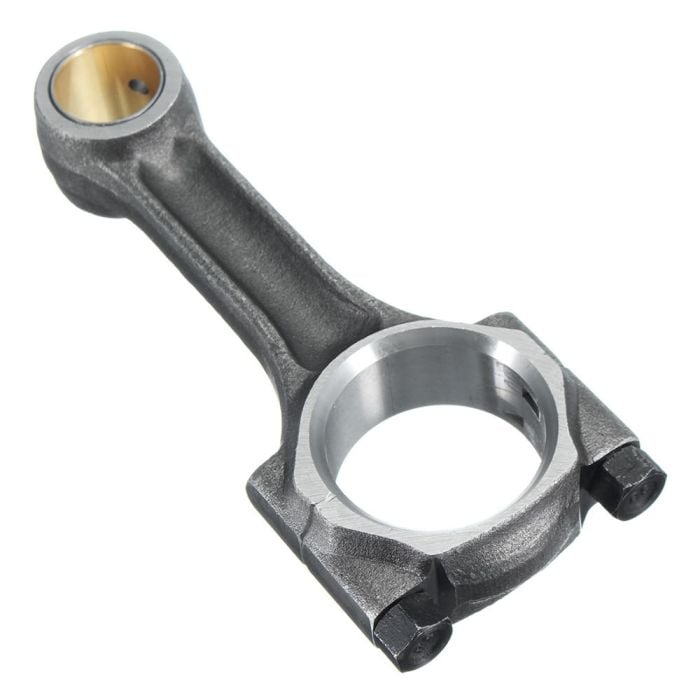Just How a Clp Engine Can Enhance Performance in Different Industries
The advent of CLP engines notes a significant shift in operational performance throughout various sectors, driven by their capacity to enhance fuel consumption and decrease downtime. Industries such as manufacturing and logistics stand to obtain substantially from their durable design and regular power result, which promise to enhance operations and boost productivity. As organizations significantly prioritize sustainability along with performance, the role of CLP engines comes to be a lot more critical. What stays to be seen is how these innovations will shape the future landscape of commercial procedures and their influence on more comprehensive economic patterns (clp engine).
Introduction of CLP Engines
CLP engines, or Continual Liquid Propellant engines, stand for a considerable improvement in propulsion innovation, specifically for space applications. These engines utilize a continuous feed system that enables the sustained expulsion of propellant, resulting in enhanced performance and performance compared to typical solid or hybrid propulsion systems. By preserving a continuous circulation of liquid propellant, CLP engines can achieve a lot more exact drive control, which is crucial for navigating spacecraft in different objective situations.
The layout of CLP engines integrates innovative products and cutting-edge fuel management systems. clp engine. This leads to decreased weight and enhanced integrity, essential aspects for long-duration space missions. Additionally, the continual procedure reduces the threat of combustion instability, an usual obstacle in traditional rocket engines.

Advantages in Production
The production of Continual Liquid Propellant (CLP) engines offers several remarkable benefits that enhance both efficiency and cost-effectiveness. Among the primary benefits is the structured manufacturing process, which minimizes the intricacy connected with typical propulsion systems. By utilizing liquid propellant, makers can achieve higher accuracy in engine performance, causing enhanced energy outcome and lowered waste.
Furthermore, CLP engines facilitate a greater degree of modularity, permitting simpler integration right into various production lines. This flexibility can substantially reduce preparations and boost general functional adaptability. Using CLP modern technology likewise often tends to decrease the need for extensive maintenance as a result of fewer moving components, which equates right into minimized downtime and functional prices.

Applications in Logistics
Leveraging Continuous Liquid Propellant (CLP) engines in logistics offers significant advantages in operational effectiveness and dependability. These engines offer a robust service for various transportation needs, enabling the smooth activity of items throughout large distances. The fundamental design of CLP engines permits consistent power output, which equates into smoother and more foreseeable transport timetables.
Among the essential applications of CLP engines in logistics remains in durable products transportation, where they can drive both ground and airborne cars. Their ability to maintain high efficiency under varying load problems makes certain that shipment timelines are met, thereby boosting client fulfillment. Additionally, CLP engines can be incorporated right into automated logistics systems, assisting in real-time tracking and maximizing path planning.
In addition, the longevity of CLP engines minimizes maintenance downtime, permitting logistics business to maximize their functional capabilities. This is specifically visit homepage useful in warehousing operations, where performance in dealing with and transporting products is crucial. As logistics proceeds to progress, the integration of CLP engines stands for a forward-thinking approach that not only improves performance yet likewise sustains the market's growing needs for reliability and speed.
Effect On Power Performance
Exactly How do Continuous Fluid Propellant (CLP) engines boost power efficiency in transport? CLP engines use a constant flow of fluid fuel, optimizing burning procedures and maintaining a secure thrust output. This layout reduces power losses related to conventional burning engines, where fuel distribution can vary and bring about ineffectiveness.
The continuous operation of CLP engines permits an extra reliable thermal cycle, leading to higher specific impulse compared to traditional engines. clp engine. This converts to minimized fuel usage for the very same quantity of work done, substantially reducing functional prices throughout various transport industries, including aeronautics and maritime sectors
Moreover, the ability of CLP engines to preserve ideal efficiency under differing lots conditions minimizes the demand for constant velocity and slowdown, even more improving fuel performance. Enhanced energy performance not just adds to set you back financial savings however additionally results in lower greenhouse gas exhausts, aligning with worldwide sustainability goals.
Future Trends and Innovations
Arising innovations in Continual Liquid Propellant (CLP) engine innovation guarantee to reinvent the landscape of transport effectiveness and sustainability. As markets pivot toward greener alternatives, CLP engines stand at the view forefront, integrating cutting-edge products and layout methodologies that improve performance while minimizing ecological impact.
Among the most promising trends is the fostering of crossbreed systems that integrate CLP engines with eco-friendly power sources. This synergy can optimize gas intake and minimize emissions, lining up with worldwide sustainability objectives. Additionally, improvements in computational fluid characteristics (CFD) are promoting the layout of even more aerodynamically reliable engines, resulting in lowered drag and enhanced gas efficiency.
In addition, the growth of clever monitoring systems is established to improve functional efficiencies. These systems utilize data analytics and IoT technology to optimize engine performance in real-time, making certain that the engines operate within their most reliable parameters.
As research study remains to discover alternative Continue propellant solutions-- such as biofuels and artificial fuels-- the future of CLP engines looks appealing. By using these developments, markets can not just improve their effectiveness yet also contribute considerably to a cleaner, much more sustainable future in transport.
Verdict
In conclusion, CLP engines represent a considerable improvement in performance throughout several sectors. The assimilation of advanced materials and fewer relocating components decreases upkeep needs, while placement with sustainability objectives settings CLP engines as an essential innovation for the future.